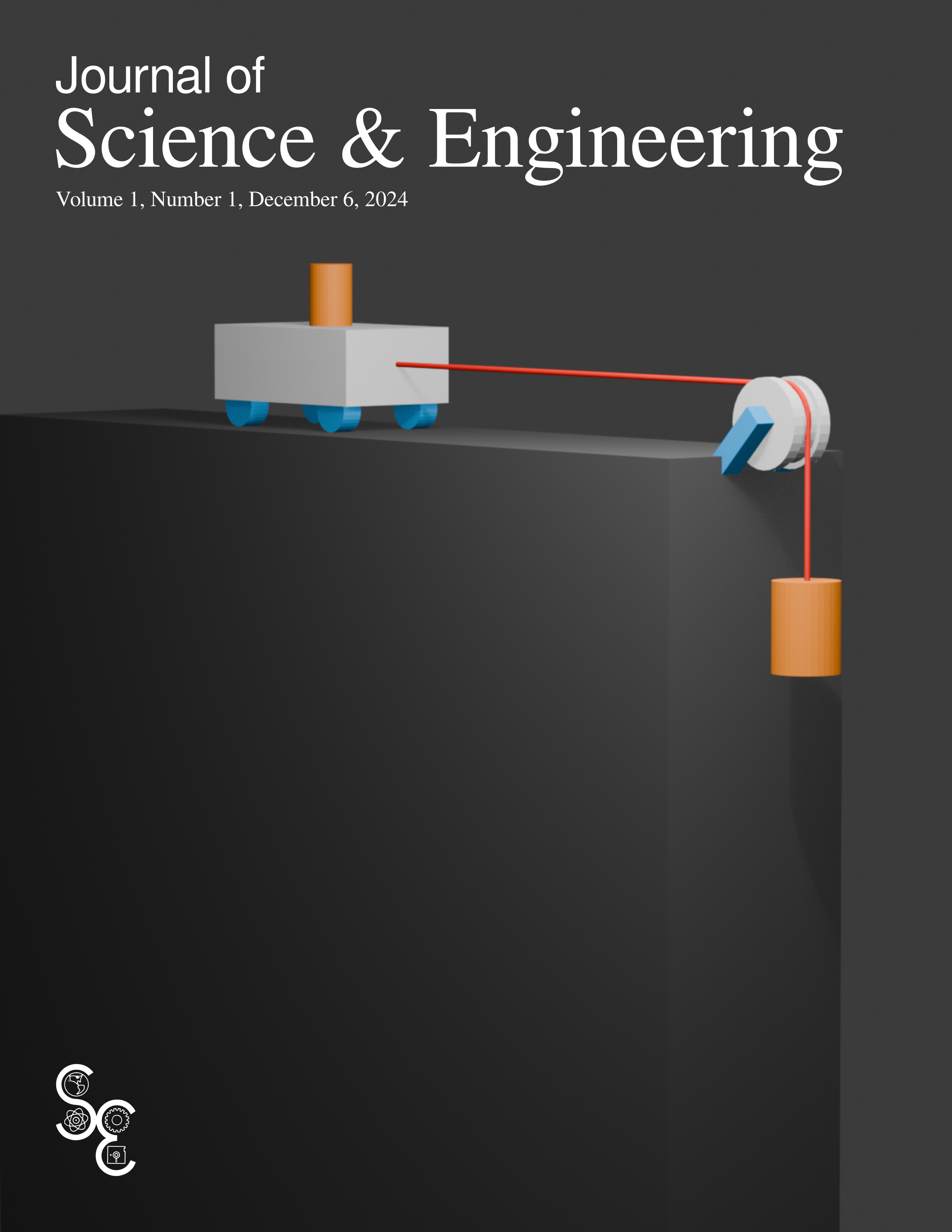Verifying Newton's second law: the relationship between force and acceleration
Keywords:
force, mass, acceleration, Newton's second law, Atwood machineAbstract
This experiment investigates the relationship betwen mass, net force, and acceleration in accordance with Newton's second law of motion. A cart was set up on a near-frictionless plane with a pulley system and accelerated by a constant pulling force generated by a 0.100 kg weight. For each of six mass configurations, three trials were conducted, recording the time taken for the cart to travel a fixed distance of 0.800 m. Acceleration was calculated independently for each trial to capture variability, with averages and standard deviations computed as additional supporting evidence. Results demonstrated a clear inverse relationship: the average acceleration decreased from approximately 1.70 m/s2 at 0 g to 0.57 m/s2 at 1.000 kg, with low standard deviations indicating consistency across trials. For the 0 g mass configuration, calculated accelerations for individual trials ranged from 1.37-1.93 m/s2, while for the 1.000 kg mass, accelerations ranged from 0.44-0.66 m/s2. These findings confirm an inverse relationship between mass and acceleration under a constant force, aligning with Newton's prediction that F=ma and supporting the law's applicability in controlled experimental settings.
References
R. D. Knight, Physics for Scientists and Engineers: a strategic approach, 4th ed. (Pearson, 2017).
D. S. Starnes, J. Tabor, D. Yates, and D. S. Moore, The Practice of Statistics, 5th ed. (W. H. Freeman and Company, 2015).
R. K. Hetzler, C. D. Stickley, K. M. Lundquist, and I. F. Kimura, Reliability and accuracy of handheld stopwatches compared with electronic timing in measuring sprint performance, Journal of Strength and Conditioning Research 22, 1969 (2008). DOI: 10.1519/JSC.0b013e318185f36c https://journals.lww.com/nsca-jscr/fulltext/2008/11000/reliability_and_accuracy_of_handheld_stopwatches.35.aspx
J. R. Taylor, An Introduction to Error Analysis: the study of uncertainties in physical measurements, 2nd ed. (University Science Books, 1997) .
Downloads
Published
Data Availability Statement
Data are available by contacting the authors.
Issue
Section
License
Copyright (c) 2024 Journal of Science & Engineering

This work is licensed under a Creative Commons Attribution-NonCommercial-ShareAlike 4.0 International License.





